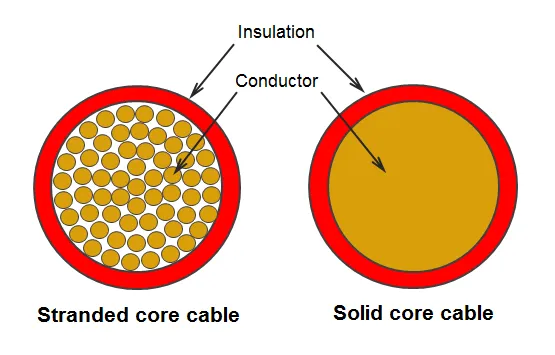Stranded vs. Solid Conductor Cables: Pros and Cons
Time: 2025-06-10 15:43:05
Source: Henan Province Jianyun Cable Co., Ltd.
Table of Contents
Introduction
When selecting cables for electrical installations, understanding the differences between stranded and solid conductor cables is crucial. Each type offers unique advantages and is suited for specific applications. This guide delves into their characteristics, benefits, and ideal use cases to assist in making an informed choice.

Solid Conductor Cables
Solid conductor cables consist of a single, solid wire made from materials like copper or aluminum. They are commonly used in permanent, stationary installations.
Advantages
-
Lower Resistance: Solid conductors have lower resistance compared to stranded wires of the same gauge, leading to better performance in long-distance applications.
-
Cost-Effective: Generally less expensive to manufacture and purchase.
-
Durability: Less prone to physical damage from bending or flexing.
-
Better Signal Integrity: Ideal for high-frequency applications due to reduced signal loss.
Disadvantages
-
Limited Flexibility: Not suitable for applications requiring frequent movement or bending.
-
Prone to Breakage: Can break if subjected to repeated flexing or vibration.
-
Challenging Installation: More difficult to route in tight spaces.
Stranded Conductor Cables
Stranded conductor cables are composed of multiple small wires twisted together to form a larger conductor. They are preferred in applications where flexibility is essential.
Advantages
-
High Flexibility: Ideal for applications requiring frequent movement or bending.
-
Resistance to Vibration: Less likely to break under mechanical stress.
-
Ease of Installation: Easier to route in tight or confined spaces.
-
Durability: Better suited for portable or temporary installations.
Disadvantages
-
Higher Resistance: Slightly higher resistance than solid conductors, which can lead to increased power loss over long distances.
-
More Expensive: Typically more costly due to the manufacturing process.
-
Potential for Signal Loss: May experience more signal degradation in high-frequency applications.
Comparison Table
|
Feature
|
Solid Conductor
|
Stranded Conductor
|
|
Flexibility
|
Low
|
High
|
|
Resistance
|
Lower
|
Higher
|
|
Cost
|
Lower
|
Higher
|
|
Durability
|
High
|
Moderate
|
|
Installation Ease
|
Challenging
|
Easy
|
Ideal Applications
Solid Conductor Cables are best suited for:
-
Permanent installations in walls or ceilings.
-
Long-distance wiring where flexibility is not a concern.
-
High-frequency applications requiring minimal signal loss.
Stranded Conductor Cables are ideal for:
-
Portable or temporary installations.
-
Applications requiring frequent movement or bending.
-
Wiring in tight or confined spaces.
Conclusion
Choosing between stranded and solid conductor cables depends on the specific requirements of your application. Solid conductors offer lower resistance and durability, making them suitable for permanent installations. Stranded conductors provide flexibility and ease of installation, ideal for applications requiring movement or confined spaces. Assessing your project's needs will guide you to the appropriate choice.
